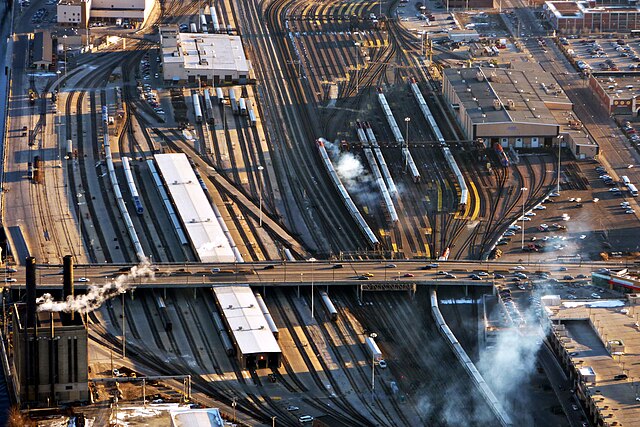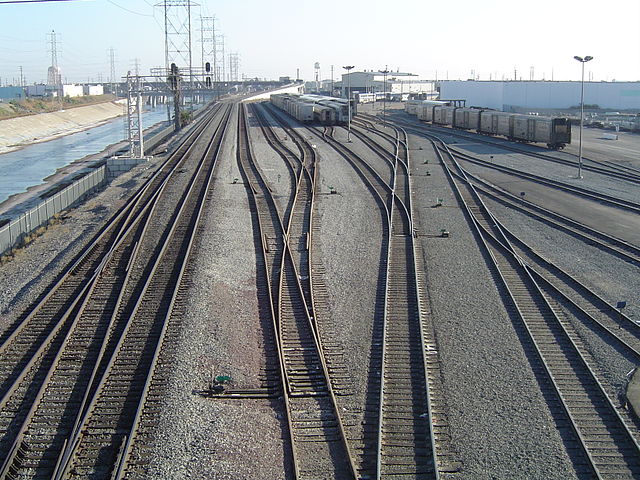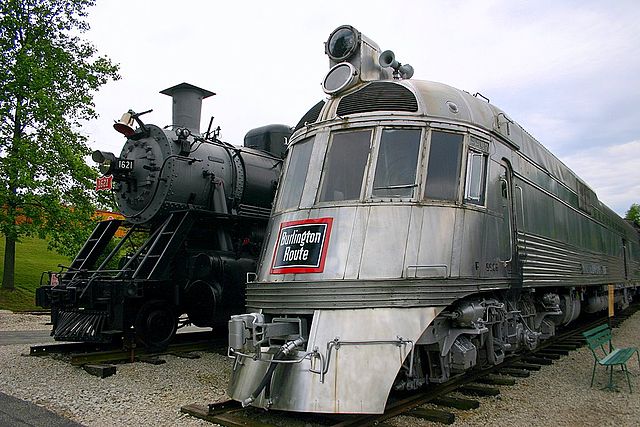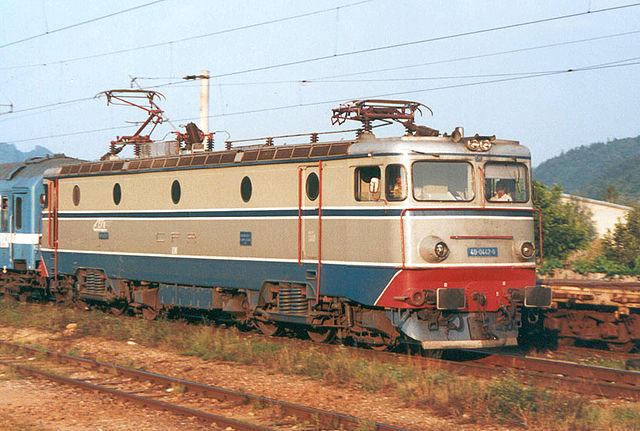A rail yard, railway yard, railroad yard (US) or simply yard, is a series of tracks in a rail network for storing, sorting, or loading and unloading rail vehicles and locomotives. Yards have many tracks in parallel for keeping rolling stock or unused locomotives stored off the main line, so that they do not obstruct the flow of traffic. Cars or wagons are moved around by specially designed yard switcher locomotives (US) or shunter locomotives (UK), a type of locomotive. Cars or wagons in a yard may be sorted by numerous categories, including railway company, loaded or unloaded, destination, car type, or whether they need repairs. Yards are normally built where there is a need to store rail vehicles while they are not being loaded or unloaded, or are waiting to be assembled into trains. Large yards may have a tower to control operations.

A large Amtrak and Metra coach yard just south of Chicago Union Station. About 25 percent of all rail traffic in the United States travels through the Chicago area.
Yard for Amtrak equipment, located next to the Los Angeles River. The two tracks on the left are the mainline.
The "hump" of a hump yard. Railcars travel past retarders, which control their speed, and are directed onto tracks to be assembled into new trains. The control tower operates the retarders.
A coach yard in Shanghai, China
The term rolling stock in the rail transport industry refers to railway vehicles, including both powered and unpowered vehicles: for example, locomotives, freight and passenger cars, and non-revenue cars. Passenger vehicles can be un-powered, or self-propelled, single or multiple units. A connected series of railway vehicles is a train.
Variety of rolling stock in rail yard
Steam and diesel locomotives
Electric locomotive
Diesel multiple unit (DMU)








